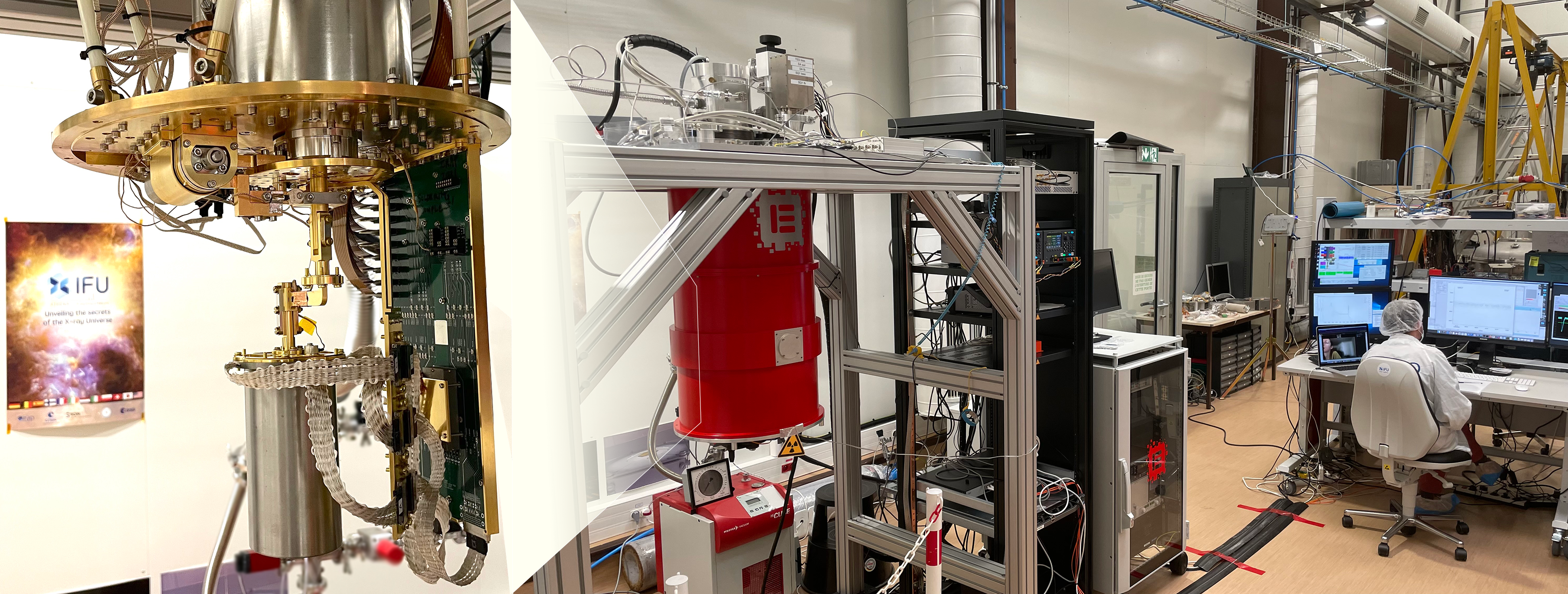
Date.
The test platform developed by IRAP and CNES in Toulouse is a key element of the demonstration of the detection chain electronics developed in France for the Athena X-IFU. Within this platform, prototypes of flight electronics will be included in an end-to-end detection chain covering from the transition-edge sensor (TES) microcalorimeters to the X-IFU data analysis framework.
The installation of the test bench in the IRAP high-bay clean room started in August 2018 with the first cooling down of the cryostat. It allowed to reach a temperature of 30 mK, well below the required 50 mK. Once the detection chain was integrated, the test bench started to yield critical feedback on current subsystem designs and electronic interfaces. Later, it will allow the validation of the sources needed for the X-IFU calibration and the optimization of their operation.
The first X-ray detection at IRAP was achieved in December 2021.
The first X-ray detection at IRAP was achieved in December 2021. Optimization of the signal to noise ratio could begin, starting from a 3.3 eV spectral resolution at 5.9 keV. This optimization is performed through a systematic program of electromagnetic compatibility analysis and electromagnetic interferences reduction. These activities are still on-going. The X-IFU prototypes validation will start next, during summer 2022.
The test bench is composed of a commercial cryostat based on a two-stage pulse tube precooling a two-stage ADR, from Entropy GmbH, and a complete detection chain provided by our US partners. The detectors assembly, cooled down to 55 mK, includes a 1024-pixel array of transition-edge sensor (TES) microcalorimeter spectrometers provided by NASA/GSFC. 2 x 32 pixels of the array are read by superconducting quantum interference devices (SQUIDs) and multiplexers from NIST who also provides the amplification stage of the very faint signals at an intermediate temperature of 3 K. A complete warm readout system for time domain multiplexing, provided by NIST and NASA/GSFC, allowed the validation of the detectors and cold amplification stage functionality on an 55Fe radioactive source (Mn Kα X-ray complex at 5.9 keV), seen through an X-ray transparent window from Luxel Corp. at the bottom of the cryostat.
For the X-IFU readout chain demonstration, prototype room temperature of the future flight electronics composed of the Warm Front-End Electronics (WFEE), the low noise amplifier provided by the APC laboratory , and the Digital Readout Electronics (DRE), sending the multiplexing commands and performing the signal demodulation, provided by IRAP , will replace step by step the corresponding NIST and NASA/GSFC electronics.
By François Pajot
Chair of the X-IFU Calibration Team


 Youtube
Youtube